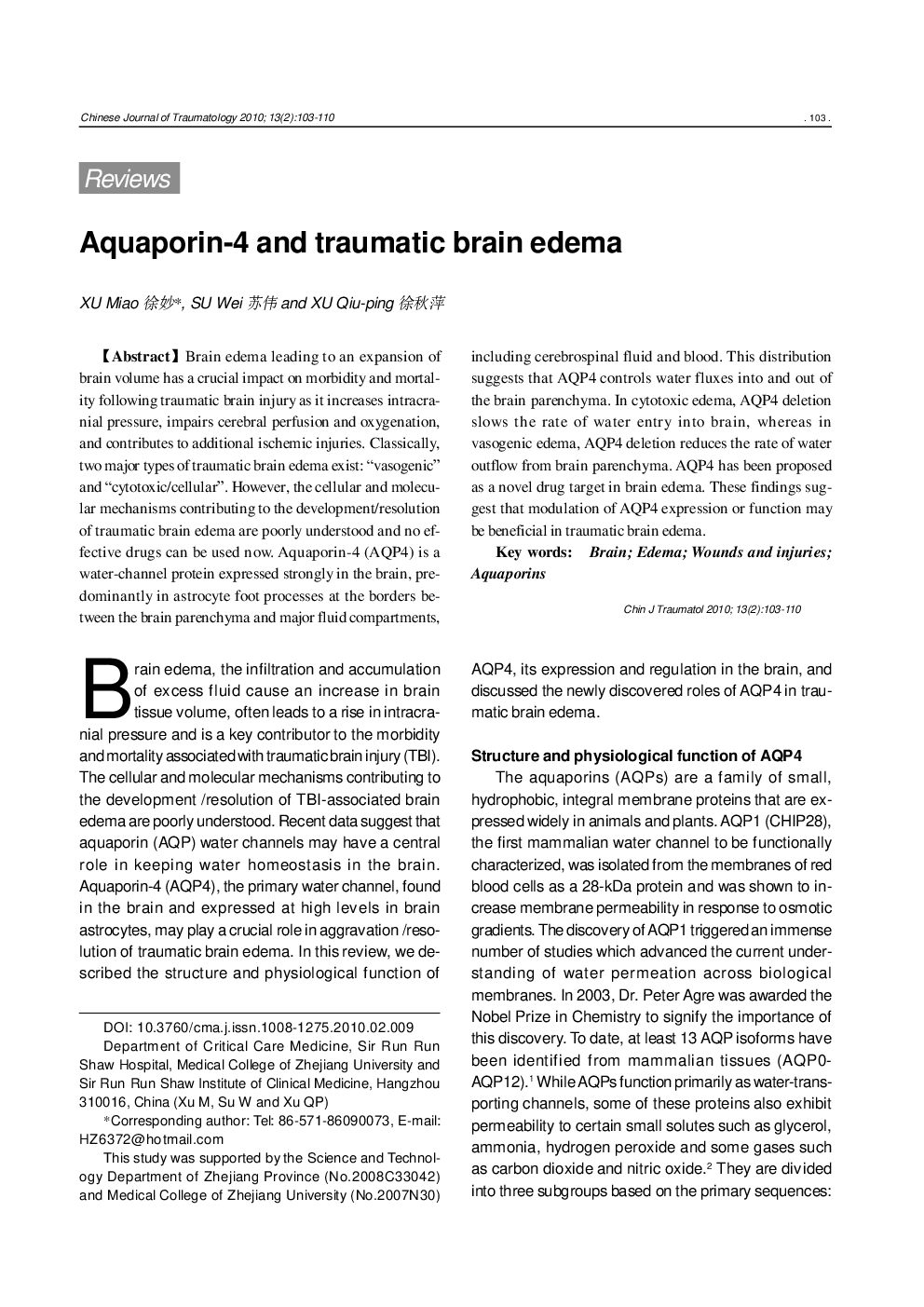| Article ID | Journal | Published Year | Pages | File Type |
|---|---|---|---|---|
| 3107801 | Chinese Journal of Traumatology | 2010 | 8 Pages |
Brain edema leading to an expansion of brain volume has a crucial impact on morbidity and mortality following traumatic brain injury as it increases intracranial pressure, impairs cerebral perfusion and oxygenation, and contributes to additional ischemic injuries. Classically, two major types of traumatic brain edema exist: “vasogenic” and “cytotoxic/cellular”. However, the cellular and molecular mechanisms contributing to the development/resolution of traumatic brain edema are poorly understood and no effective drugs can be used now. Aquaporin-4 (AQP4) is a water-channel protein expressed strongly in the brain, predominantly in astrocyte foot processes at the borders between the brain parenchyma and major fluid compartments, including cerebrospinal fluid and blood. This distribution suggests that AQP4 controls water fluxes into and out of the brain parenchyma. In cytotoxic edema, AQP4 deletion slows the rate of water entry into brain, whereas in vasogenic edema, AQP4 deletion reduces the rate of water outflow from brain parenchyma. AQP4 has been proposed as a novel drug target in brain edema. These findings suggest that modulation of AQP4 expression or function may be beneficial in traumatic brain edema.
